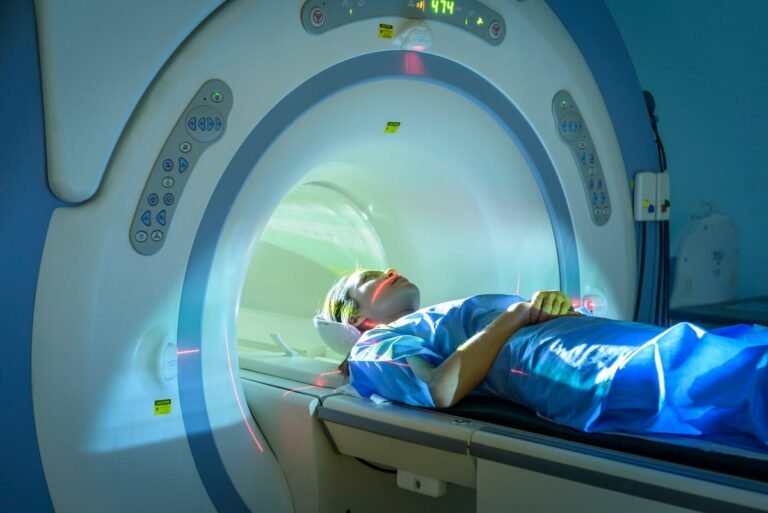MRI Accidents Explained: What Causes Deaths and Injuries in Scanners
When serious accidents happen in magnetic resonance imaging scanners, it’s usually because people ignore one very important rule
Monty Rakusen/Digital Vision
Last month a man on Long Island died after he was pulled into a magnetic resonance imaging scanner by a large metal chain he was wearing around his neck. It’s not the first time an MRI scanner has proved to be a death trap.
In this latest case, according to media reports, the man had accompanied his wife to the MRI center and was waiting outside the exam room while her knee was being scanned. When the procedure was completed, she called him over so that he could help her stand up. The man entered the MRI room, and a 20-pound chain he was wearing around his neck for weight training was immediately attracted to the magnet in the MRI. It pulled the man’s body with it, hurled him against the scanner and trapped him there. He sustained serious injuries and was pronounced dead at a hospital the following day.
How could this happen? An MRI scanner uses magnetic fields generated by metal coils in its core, and other fields are then added in pulses. In simple terms, a static magnetic field orients the nuclei of hydrogen atoms in the body so they’re all facing the same direction; the magnetic pulses briefly redirect the nuclei, and then they align themselves in parallel again. The scanner detects these shifts and uses them to create images of the tissue.
On supporting science journalism
If you’re enjoying this article, consider supporting our award-winning journalism by subscribing. By purchasing a subscription you are helping to ensure the future of impactful stories about the discoveries and ideas shaping our world today.
In terms of safety, the problem is that, as current flows through the device, it becomes a huge and extremely powerful electromagnet. Ferromagnetic materials—which, at room temperature, include iron, cobalt, nickel and some metal alloys—are attracted to it with a great deal of force. That means metallic objects that come close to a switched on MRI can become dangerous projectiles.
So there’s a good reason why metal parts are taboo in and around MRI machines. In preparation for a scan, patients are asked to remove any metal objects they are carrying. When people don’t follow this instruction, serious accidents can occur. In 2023 a Brazilian man took a loaded firearm into the MRI room where he was accompanying his mother. The magnet pulled the gun out of his waistband, and a shot went off when it hit the scanner. The bullet hit the man in the abdomen, causing a fatal injury. Similar weapon discharges have also occurred in the U.S., fortunately with less serious outcomes, including a 2012 incident in New York State that involved an off-duty police officer.
Before a patient is brought in for a scan, they’re asked whether they have any medical or cosmetic implants containing metal in their body. These can include pacemakers, stents, piercings and screws in bones. Metal residue from gunshot wounds must also be reported. The staff then check whether the objects could cause problems. In the end, most metal objects inside the body pose no danger to patients. But if they’re overlooked, things can get ugly.
Projectile fragments and metal shavings that have penetrated the tissue as a result of gunshot wounds or accidents may travel a few millimeters during the scan. Doctors consider very carefully whether an MRI is too risky in the presence of such foreign bodies and then switch to other imaging procedures if necessary. Small metal particles also sometimes move back and forth around their own axis and in confined spaces. This can cause them to heat up dangerously.
There can even be problems with tattoos that contain certain metallic inks. In one case, a tattooed professional football player sustained burns during a pelvic MRI scan. “At-risk” tattoos are those with black pigment or any other pigments containing iron oxide, as well as those with a design that displays loops, large circular objects or multiple adjacent points.
In one extreme example of internal metal objects causing damage during an MRI scan, a woman wore a sex toy into the MRI without the knowledge of the clinic staff. Most of these toys are made of silicone, a plastic that should be unproblematic in the magnet, but to the surprise of those present, especially the woman being examined, this one did contain ferromagnetic material. As a result, she suffered unspecified internal injuries and had to be admitted to a hospital.
In general, MRIs are very safe when used properly. Technicians perform tens of thousands of scans every year without causing any damage to those being examined. Serious accidents involving overlooked or unreported ferromagnetic materials are very rare. But it’s important that MRI patients follow one cardinal rule: leave the metal outside the scanning room.
This article originally appeared in Spektrum der Wissenschaft and was reproduced with permission.
It’s Time to Stand Up for Science
Before you close the page, we need to ask for your support. Scientific American has served as an advocate for science and industry for 180 years, and we think right now is the most critical moment in that two-century history.
We’re not asking for charity. If you become a Digital, Print or Unlimited subscriber to Scientific American, you can help ensure that our coverage is centered on meaningful research and discovery; that we have the resources to report on the decisions that threaten labs across the U.S.; and that we support both future and working scientists at a time when the value of science itself often goes unrecognized. Click here to subscribe.
